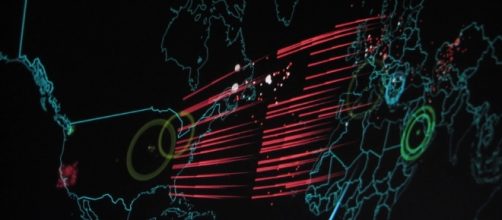On Saturday a daring #global Cyber Attack sent governments, businesses and online security analysts across the world into an alarming state of high alert. From China to the US to Britain, experts and security departments rushed to limit the damage from the worldwide attack, with fears that if people don't act efficiently companies could lose data and information – unless those same very companies agree to the attacker's ransom demands.
Only 24 hours earlier, #malicious software was funneled off via email as it highlighted the vulnerabilities in security computer systems in as many as one hundred different countries, making it one of the greatest “ransomware” attacks ever to happen.
The attack greedily took over large amounts of computers, and then encrypted the information on those computers and subsequently stipulated $300 payments from the owners to #unlock their devices. Included in this attack were some of the world's biggest companies, institutions and government agencies, including FedEx in the United States, the Russian Interior Ministry, as well as Britain’s National Health Service.
As people around the world debated whether to cough up the $300 ransom fee or face losing their precious data, online Security Experts predicted that the perpetrators may take in more than $1 billion throughout the world before the deadline loomed to unpick the online storage facilities.
First seen in Britain
The attack was first called to attention in #Britain on Friday and then it expanded throughout the rest of the world, setting off fears that the cyberattack may make itself known in various ways for months and possibly years. The world went into overdrive, discussing and guessing the intentions of the hackers: were they enacting this threat merely for profits? ... or were they after something else?
The attack was labeled brash and bold by #security experts who added that such cyber ransomware attacks take place daily, but that this particular attack was differentiated by its size, its audacity and and its limitless scope.This brash cyber warfare was far more infectious, spreading to many different countries and companies and being funneled across different networks and at an alarming speed.
India, Taiwan, Russia, France, Ukraine... many countries had to deal with the dreaded attack and unpick its effects so that business could return to normal.
Cyberweapon developed by the NSA
The cyber-weapon used in the attack was created and developed by the NSA, and this is the first time that such a weapon has been unleashed on the world by cyber criminals. Interestingly, even though #Fedex suffered a hit, most users in the US were spared the pain that the rest of the world was forced to endure and this was a god thing for the United States.
It was in fact a lone British cyber security researcher who had unintentionally restricted the virus from multiplying and spreading when he bought the domain name that the attackers had used but not purchased.
Their ransomware code would kick in and stop the virus spreading through an online request to the domain.
Thus, the #British researcher, with his twitter name reading @MalwareTechBlog, found the kill switch’s domain name, bought it and surprised himself and the world by halting the virus. This explains why the United States was spared a spate of attacks on businesses and organizations... one can only wonder what would have come out in the wash if US government agencies had suffered through the attack. Perhaps we would know more about Trump and Russia, or about other US secret intelligence. Or not.

